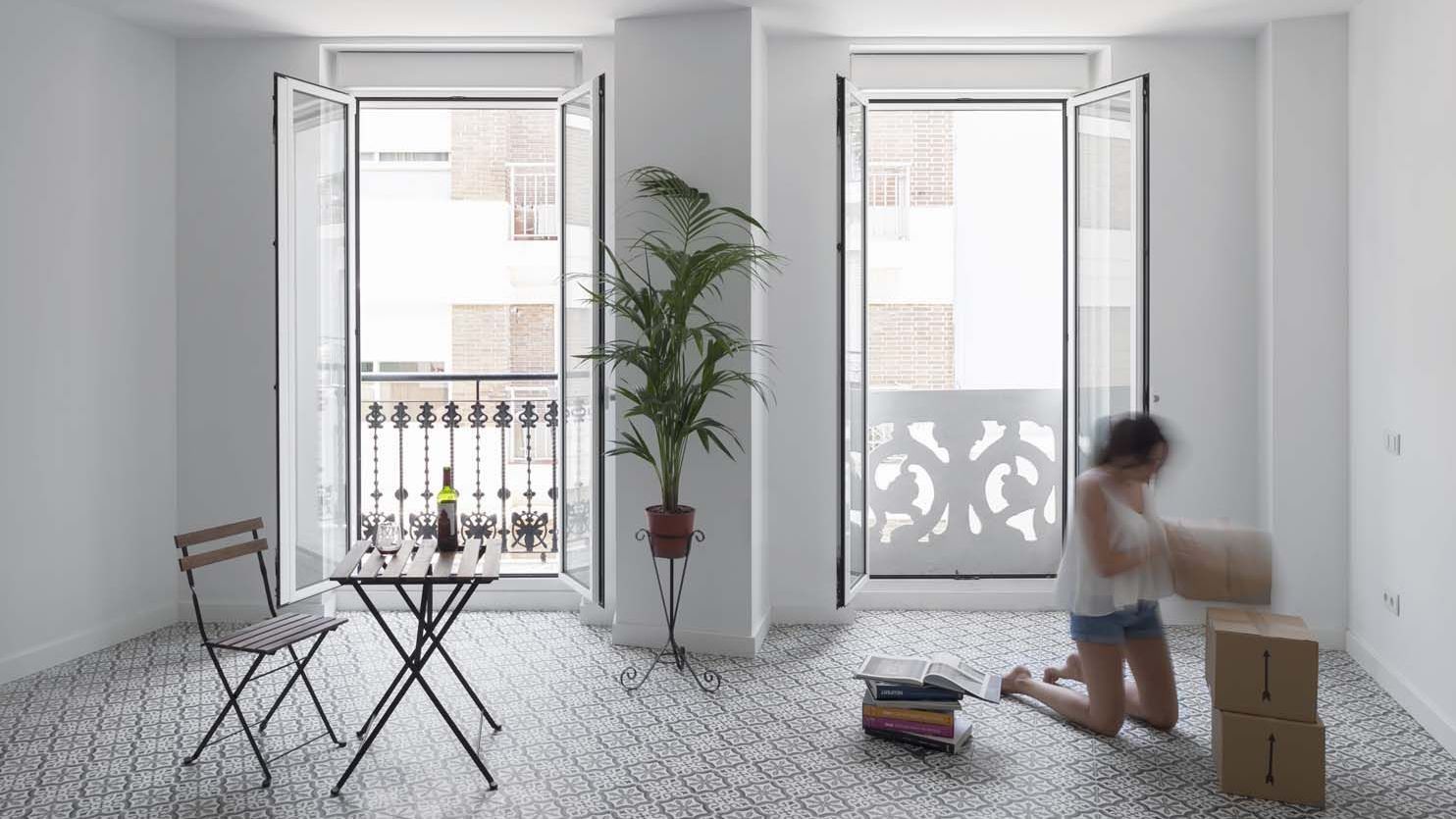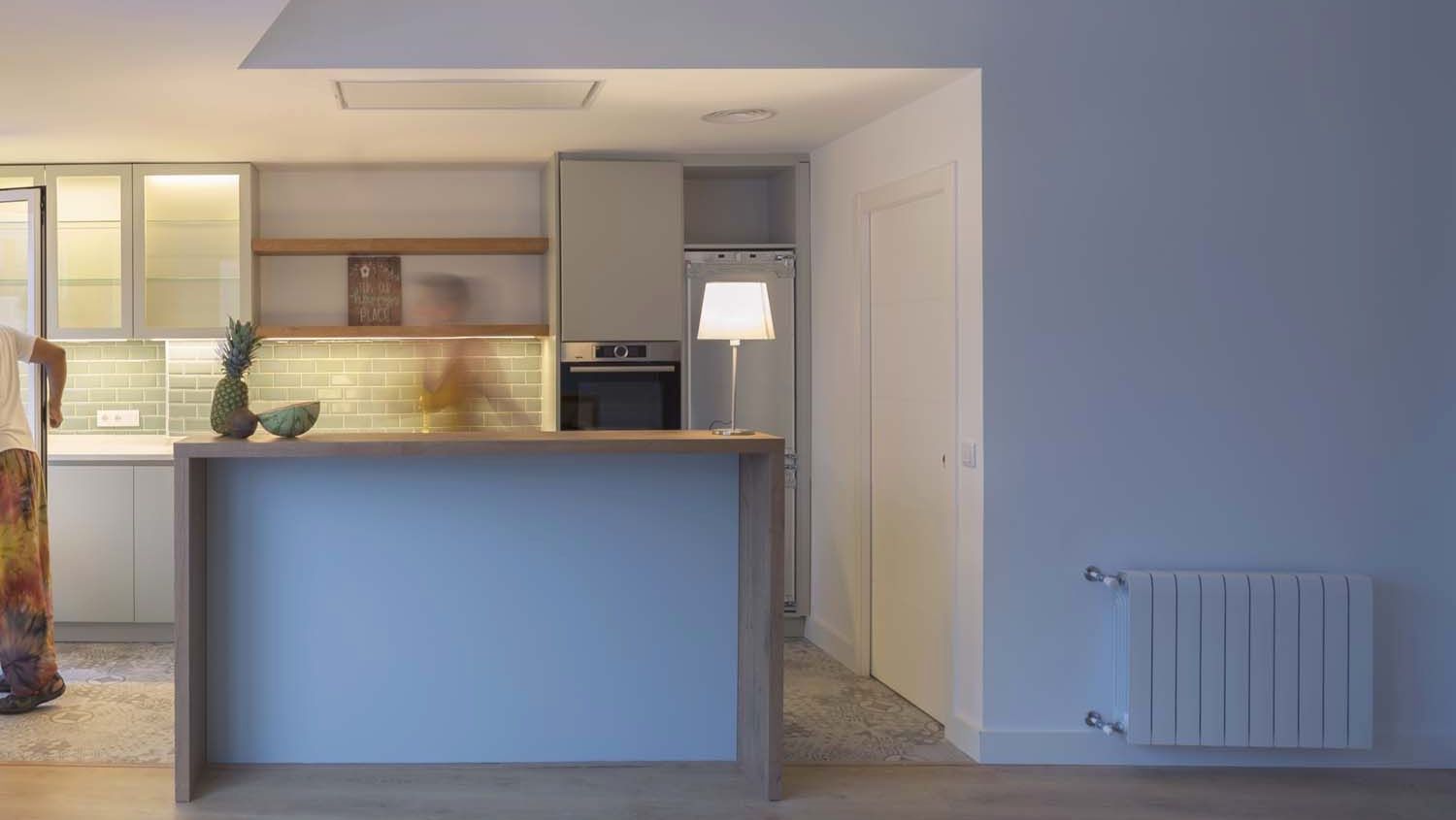“We are misfits designing for misfits”. This striking phrase is one of the first things that you read on the Designable website. A great declaration of intent, but also a slogan that perfectly describes the creators of this project: Pablo and Andrés. They do architecture differently, unconventional and against the norm. They simply don’t understand it any other way.
But we must not be fooled. Behind Designable is a visionary business concept that is technological and ahead of the current market. An entrepreneurial project whose seeds were sown at the Graduate School of Technical Teaching.
Andrés and Pablo. Pablo and Andrés. Two people with a great idea that will give us a lot to talk about: Designable.
A friendship made at CEU
Designable was born parallel to Andrés Perales and Pablo Bertolín’s friendship, architects in training with an impulse that always pushed them off the beaten track.
Andrés is free spirited, a chatterbox, he arrived in Ibiza looking for Architecture that he had never done before. After two years dedicating himself to luxury international projects on the island, he grew tired of impossible requests and fickle clients.
Pablo´s dreams where crushed by a crisis in the sector that completely halted work across the country. Something that far from being a hindrance was the necessary shock that he needed in order to create an idea: to sell, bit by bit, abandoned and apparently ugly buildings.
Destiny lead to these two friends returning and reuniting in Valencia. They had an idea and they had experience. They only needed to find clients like them: lively, creative and with all the eccentricities of the world.
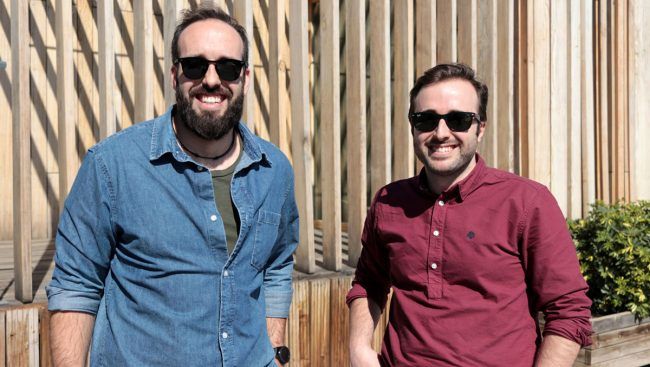
Pablo: I did a pilot test in Ruzafa, which worked really well, and so the beginnings of the business were already there. My curiosity and restlessness is what lead me to study a Masters in Business Administration (MBA) at the end of my degree, it was something that was important for me to do as most schools lack any sort of business training.
Because of that, I stick more to the more traditional business model but Andrés focusses more on the start-up model. The formula for Designable came from a mix of the two and was launched in November 2017.
Andrés: We got to know each other here at the ESET in a pottery workshop back in 2008. We were strange people who focused on everything that nobody else wanted to do: creative workshops, town planning… In the end, this taught us a lot about interior design, about materials and innovative approaches.
We always say that we are a “CEU” pair, but above all, we are passionate about urbanism. I think that this is what you can see in our projects; overall, what we do is urbanism within a building.
It is clear to us that, at some point, over as beer or two, the idea for Designable came to you. Having said that, tell us how you put that idea on paper, with numbers, cost calculations, all those types of things…
Andrés: When I started my MBA specialising in start-ups I realised that there was a different way for architecture to work that is much leaner and allows you to go over things as you move through different projects. At the same time as this, Pablo was just finishing his first building.
When we got together and started to work on the concept, we realised that there are three elements people are looking for when they are developing a house: location, personalisation and sustainability. Having said that it is very difficult to have those three things in today’s architecture as it is very budget orientated. We did not want this for Designable. Obviously, we have insured that the project is viable; we have carried out hundreds of studies, SWOT analysis, projection models… We have it clear that our primary concern is the user and their wellbeing: that they feel that their house is a home, that they no longer need to depend on their car and that they can live sustainably
“WORKING ON SOCIAL MEDIA IS VERY IMPORTANT. YOU HAVE TO EXPLORE NEW WAYS OF TALKING TO THE CLIENT AND ENHACE THE GROWTH OF YOUR BUSINESS AT THE SAME TIME”
Sustainability is perhaps the only element that we impose on our projects: that there is just as high a level of sustainability on a technical level as well as in the lifestyle and on an environmental and social level. In fact, the community is a fundamental part to our project. We have created a quality space in all of our buildings to nourish the community spirit: the rooftop terrace. We developed them as spaces assigned to the neighbours themselves.
When we had more or less developed our idea, in came Pablo, the numbers guy, and gave a new perspective to the concept…
Pablo: We realised that in traditional housing promotion, the technical part is never conveyed to the clients and the profit is based exclusively from the sale. That being said, if we change this model applying a costs structure, it is possible to offer competitive housing changing the benefits of certain community services. This is what we call lifestyle.
Our model is based on a very simple idea; it is a business that can stay with you for your whole life. First, you present us with the house that you need. Then, we will adapt it according to your tastes and special features; it will always be a transparent and green constructive process. Finally, we will respond to your needs throughout your whole life.
This is the base of an economy of scale: if lots of neighbours get together and ask for a service, it will be more interesting than if it was by an individual. The difference is that it’s the business that will provide these services.
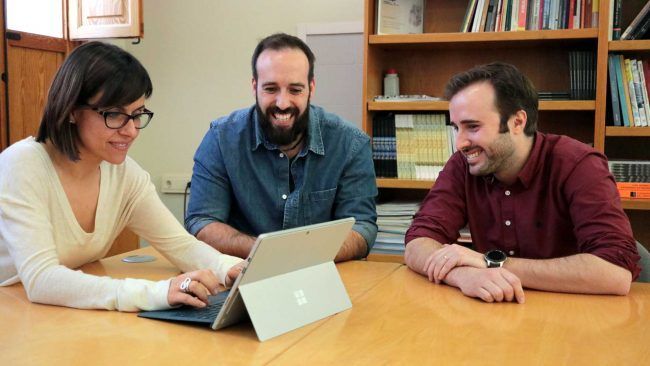
Andrés: In order to do this the architect needs to have some business training, some legal knowledge as well as knowledge on advertising and marketing. Unfortunately, you don’t leave university with these aptitudes even though it is true that architecture ensures that you have a global vision for your projects. It is perhaps for this reason that we take on a higher level of responsibility than other professions. We also have the ability that, if we are told no, instead of getting angry we look for a similar solution, we are very flexible and have a certain ability to adapt. This is what allows us to evolve at the same time as our project depending on the circumstances.
In my opinion, architects have the basis to be able to take on our own project as well as something more concrete with in an architectural studio. Above all, you have to be very proactive, listen to clients and understand that the clients are the architects. All of these experiences are highly valued at Designable.
Following the 2008 crisis, the system changed and I don’t think many architects have realised that there is a new model. Those who had realised were the clients and they now don’t look for what they did before. This disruption to supply and demand will become increasingly clear.
You mean to tell us that you have a completely B2C focus and not at all B2B. That is to use some fancy business words…
Andrés: Exactly, we are not at all interested In B2B. We don’t want to work with any type of intermediary. We don’t commission anything which is something we make very cleat to our clients.
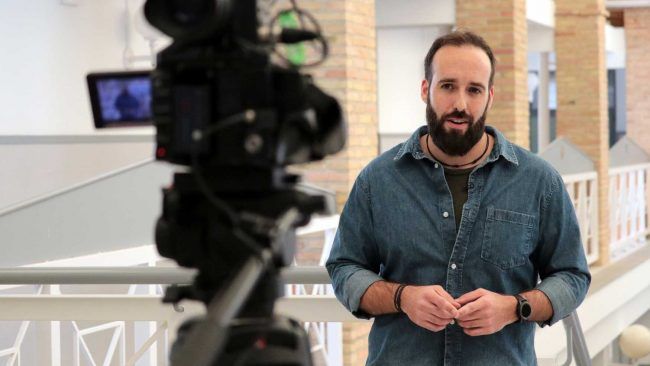
Something very interesting about Designable is the value that you place on community. In fact, in form that is on your website, you have the option for your an airport for drones on the roof top terrace…? Really?
Pablo: That isn’t even a joke. Speaking in Architectural terms, we work in three different dimensions. The private area, which is where you live and that you yourself design. The semiprivate area, which includes communal spaces that you share with your neighbours. Finally the public area: the external environment, the neighbourhood.
When we plan a building, we consider everything. Things like the legal and economic framework that allow us to, for example, build a drone airport on the roof. What we want to say is that the world is changing and, before long, we will need airports for drones: Amazon is already looking into this and it could be a reality in a few years! If this is the case, the neighbourhood community can meet and analyse the situation to see if a drone airport would work for them and then build it. The rooftop has already been reserved. It is true that people don’t really value these communal areas because they are seen as having no advantages, that is when we lose interest and forget about them.
Our approach is: what if we give them a use? Something that completes the building that we can all benefit from? For us this mix of spaces is what strengthens the attractiveness of this offer.
“WE CREATE ARCHITECTURE OF THE AUTHOR. THE DIFFERENCE FOR US IS THAT THE AUTHOR ISN’T THE PERSON THAT SIGNS THE BUILDING, BUT THE PERSON THAT LIVES IN IT.”
The buildings of today are often thought of as being very inwards and there are very few architects who work public spaces. We propose strategies for the ground floor or for the rooftops, spaces that can provide something for the neighbourhood if they are improved. Therefore, if our clients are families have young children there is the potential need for a playroom. The business would then assign the ground floor to give a service to the neighbours and the whole neighbourhood would have access to it. Straight away, the building would articulate the life of the area. This is the goal.
A personal question: Where do you live? Don’t tell us that you live in a terraced house on an estate in the suburbs of the city!
Pablo: Not at all, we both live in the centre of Valencia. I have done very little renovation on my house, it is a typical 50s building with high ceilings, moulding…
Andrés: I have in fact experienced this suburban living. I went to Ibiza, bored of being able to do what I wanted; there I had no limit on my budget, area or creativity… but it got boring when they would all tell me “here you can do whatever you want!”
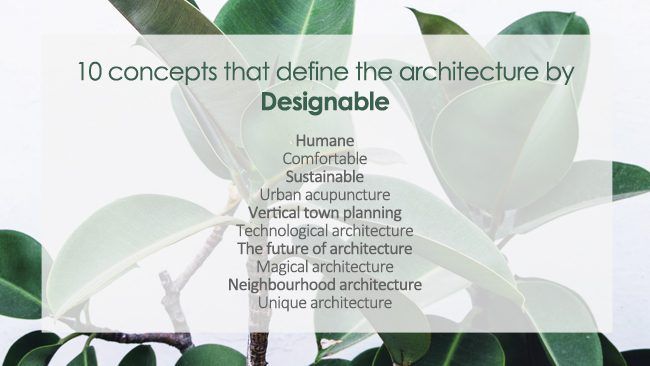
We believe that in the city and as we have fallen in love with urbanism, we believe in the ability of transforming what is already there into architecture. Something, which has sadly been lost over time. It seems that architecture is evolving much more towards the world of design and is losing its ability to change people’s lives and of course, its relationship with the environment.
Pablo: In fact, in the 60s there were lots of investigations and experiments developed about different types of housing. Now, even with all the information that we have on what is in demand we continue to classify people in the same housing model. If we can’t get away from this then there is no way to move on. If there are people that do not want two tiny bathrooms but instead want one enormous one with a huge bath… why can’t they have it?
“WE MUST RECOVER THIS PAST SPIRIT OF ARCHITECTURE. WHEN ARCHITECTS USED TO PUT THEIR HEART AND SOUL INTO IT”
Working in the suburbs is easy. The city centre is more complex and economically less attractive. Here, development companies cannot apply their cost effective models. Because of this, the easiest thing to do is to go to the suburbs, the big spaces and build enormous housing estates, making all of the houses the same and using industrial processes. This product is not going to make the user happy. This is where the conflict arises: on one hand the architect is looking to make the user happy, but on the other hand their ambitions are purely economic. If economists who are only looking for a profit are leading the developers, the happiness that a home brings will come second.

But if we, the architects with a vocation in town planning, take control of property development, the end result will be completely different. Therefore, without a doubt we will always prefer the city centre to the suburbs.
The future is now the present: sustainability
Andrés: We understand sustainability on three levels: Technical sustainability, which is perhaps the most obvious. Sustainability within the building; this allows you to optimise resources by sharing certain things such as the washing machine as well as water coming from a collecting rainfall collecting system etc. The most radical would have to be what effects movement: don’t directly use your car.
Looking into the future, it is once again clear that Europe is going to become more and more restrictive with car combustion engines. Although this is still a new thing, in six or seven years it will have become the norm. Because of this, we don’t want our buildings to have a car park. People that live in the city centre do not need their own car, in the case that they need one then we will create a solution at that precise moment.
Shortly, doing the shopping will not be an excuse: you can order it online and get it delivered. There are public bikes and transport that allow you to get around the city. What are we planning for the buildings? Using car sharing, a solution for specific moments, they will also be 100% electronic.
“WE WILL MANAGE EVERY PART OF OUR CUSTOMER JOURNEY: AT DESIGNABLE EVERYTHING IS PERFECTLY DESIGNED THANKS TO BIG DATA”
It seems complicated but it is a question of integrating these types of solutions into our life style. We are building an ecosystem to allow us to do this: in our buildings, you will not need a washing machine or your own car. The principal is a collaborative economy: sharing costs and resources for a more sustainable life.
Pablo: All of this you can do with architecture, there needs to be people who can impose these behaviours. Unfortunately, businesses only care about money and for us building houses is a job with too much responsibility for the user’s happiness not to be the principal objective. If you’re only looking for a profit, don’t dedicate yourself to building houses. Designable is about something else.
Your project brings together a mix of different disciplines seemingly unconnected to architecture. What advice can you give the students who are currently training to become architects?
Pablo: I believe that you have to start to explore new places and new sectors. It’s the most enriching thing. Architecture has always had a technical and humanist profile but it has never entered into the world of business. This can however increase the number of possibilities for architects. We know how to work on different scales we can design doorknockers or urban environments a skill helps to develop other skills and can open up lots of doors. Architects don’t just know how to draw lines.
Andrés: We firmly believe in an architectural concept that is global, reflective and changing. We would love to be able to pass on everything that we have learned and how we managed to get here to the guys that are studying now. Technology, your own projects…there is a whole world on the outside. Unfortunately, the traditional architectural horizon is getting more and more limited and unclear.
Big Data, at the service of Designable
Pablo: Andrés, I can’t believe that we haven’t mentioned technology until now when so much of our project is based on it.
Andrés: It’s true, technology is fundamental at Designable. Firstly because Big Data allows us to analyse trends and location. On the other hand, it also allows us to determine the viability of our projects in just a few seconds: we enter a series of settings into our program and then straight away we know if the project is viable or not.
Every part of attracting and looking for clients has a technological base. We work a lot on social media using it as our base. Thanks to Big Data we can gather information about the users and look related customer segments. Because of this, we put a lot of effort into our website and use our online form as a first filter. Everything has been set up and designed to collect pieces of data that can help us to create a project that is something, which the client really wants.
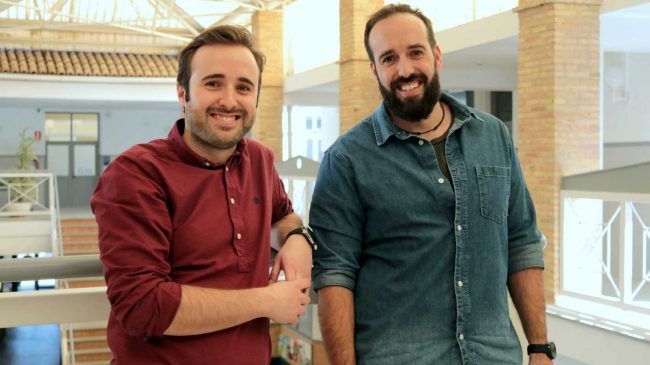
We work on the personalisation side of things with an app and through questions about your aspirations and life style, and it the presents a series of houses for the user to choose from. From the chosen house, the client can introduce changes and finalise the product with personal touches.
The interesting thing is that it is all connected to a program, which automatically presents the housing price in real time, freeing us from certain roles. This automation allows the architect to dedicate their time to things with an added value: giving us more time to think and not draw lines.
“WE HAVE TO HAVE DREAMS, EVEN IF THEY NEVER COME TRUE” – OSCAR NIEMEYER
We are evolving our toolkit so that the client can tell us what they are looking for and we, as architects, can give it to them. Translating the client’s feelings into projects is at the heart of our business.
In order to do that it is necessary to control the user experience and get to every little detail and how the Designable image is portrayed to the clients and what the customer journey is like. Big Data is what has allowed us to have everything perfectly designed.
The both of us have also trained in themes related to innovation and neuroscience. The technology is basic but it is also important to see how human beings make inconsistent mistakes, how we act and how we can translate this universe into the world of architecture.
We are coming to the end of our meeting with these to archientrepreneurs with a striking idea, in their own words: “We think that everyone is strange in their own individual way…and we have the right to be!”.
Pablo and Andrés, two lovers of architecture. Entrepreneurs and architects with a revolutionary idea that is now a reality: Designable.




























